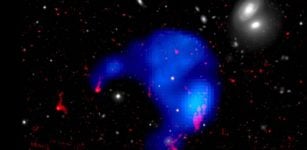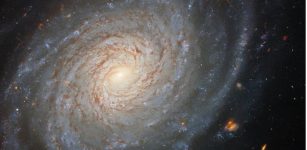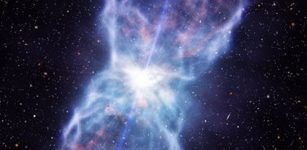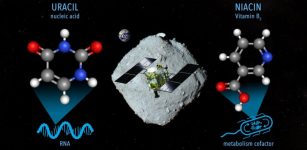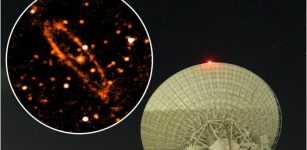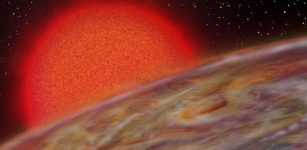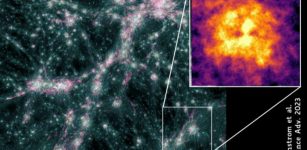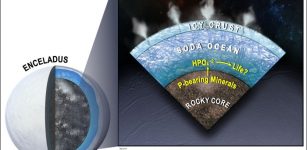Astronomers Focus On Signal That Has Been Traveling Across Universe For 12 Billion Years
Eddie Gonzales Jr. – MessageToEagle.com – Astronomers are closing in on a signal that has been traveling across the Universe for 12 billion years, bringing them nearer to understanding the life and death of the very earliest stars.
The MWA (Murchison Widefield Array), which started operating in 2013, was built specifically to detect electromagnetic radiation emitted by neutral hydrogen.
 In this image of the Epoch of Reionisation, neutral hydrogen, in red, is gradually ionized by the first stars, shown in white. The image was made by the University of Melbourne’s Dark-ages Reionisation And Galaxy Observables from Numerical Simulations (DRAGONS) programme. Credit: Paul Geil and Simon Mutch
In this image of the Epoch of Reionisation, neutral hydrogen, in red, is gradually ionized by the first stars, shown in white. The image was made by the University of Melbourne’s Dark-ages Reionisation And Galaxy Observables from Numerical Simulations (DRAGONS) programme. Credit: Paul Geil and Simon Mutch
The neutral hydrogen that dominated space and time before and in the early period of the EoR (Epoch of Reionisation) radiated at a wavelength of approximately 21 centimeters. Stretched now to somewhere above two meters because of the expansion of the Universe, the signal persists — and detecting it remains the theoretically best way to probe conditions in the early days of the Cosmos.
“Defining the evolution of the EoR is extremely important for our understanding of astrophysics and cosmology,” explains Dr. Nichole Barry from Australia’s University of Melbourne and the ARC Centre of Excellence for All-Sky Astrophysics in 3 Dimensions (ASTRO 3D), in a press release.
“So far, though, no one has been able to observe it. These results take us a lot closer to that goal.”
“The signal that we’re looking for is more than 12 billion years old,” explains ASTRO 3D member and co-author Associate Professor Cathryn Trott, from the International Centre for Radio Astronomy Research at Curtin University in Western Australia.
“It is exceptionally weak and there are a lot of other galaxies in between it and us. They get in the way and make it very difficult to extract the information we’re after.”
In other words, the signals recorded by the MWA — and other EoR-hunting devices such as the Hydrogen Epoch of Reionisation Array in South Africa and the Low-Frequency Array in The Netherlands — are extremely messy.
Using 21 hours of raw data researchers explored new techniques to refine the analysis the result was a level of precision that significantly reduced the range in which the EoR may have begun and, pulling in constraints by almost an order of magnitude.
“We can’t really say that this paper gets us closer to precisely dating the start or finish of the EoR, but it does rule out some of the more extreme models,” says Professor Trott.
“That it happened very rapidly is now ruled out. That the conditions were very cold is now also ruled out.”‘
Written by Eddie Gonzales Jr. – MessageToEagle.com Staff

